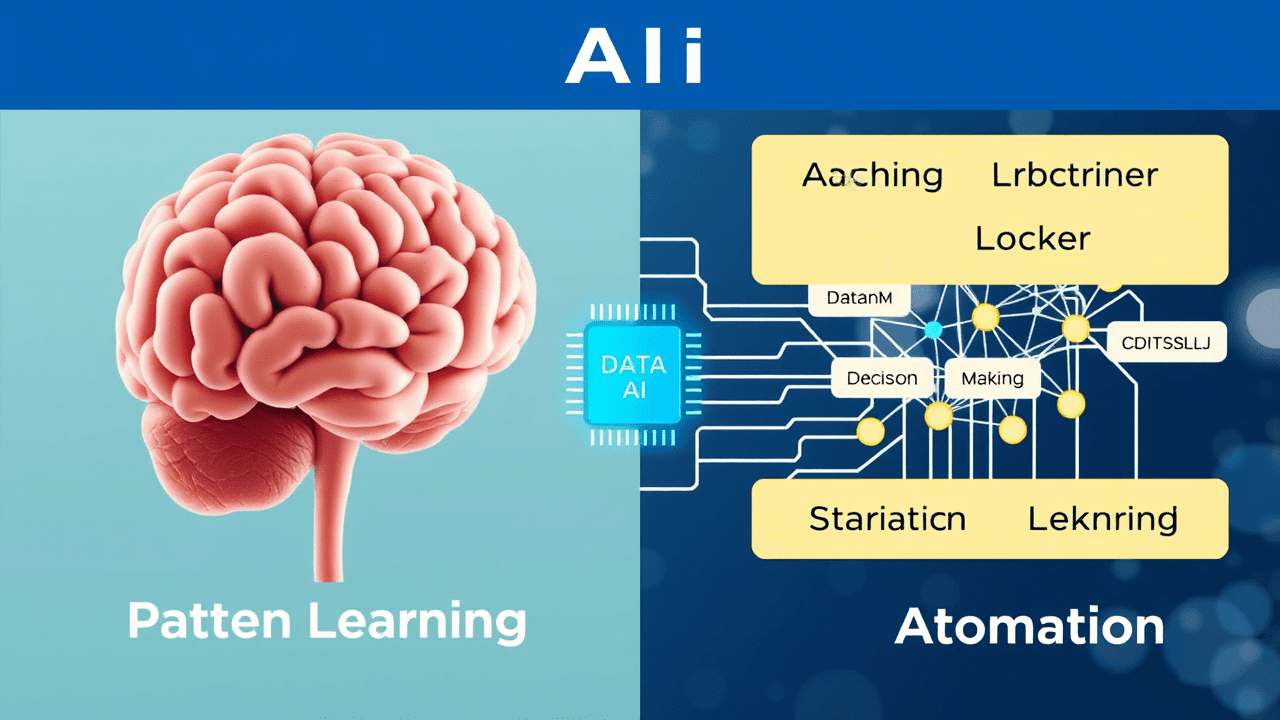The financial landscape is evolving rapidly with AI-powered tools that can see, read, and interpret market data like never before. Here’s how multimodal AI is transforming trading strategies in 2025.
Introduction: The Multimodal Revolution
In today’s high-speed financial markets, information is everything. Traditional trading algorithms have long relied on numerical data and simple technical indicators. But the landscape is changing dramatically with the rise of multimodal AI systems – advanced platforms that can simultaneously process multiple types of information including visual data, text, market prices, and social sentiment.
Unlike their predecessors, these AI systems don’t just see numbers – they understand context, identify patterns across diverse datasets, and generate insights that would be impossible for human traders to discover manually. According to recent industry research, firms implementing multimodal AI trading systems have seen performance improvements of 12-18% compared to traditional quantitative approaches.
Visual + Text Analysis: Seeing Beyond Numbers
Chart Pattern Recognition Reimagined
Modern multimodal AI systems have transformed the traditional practice of chart analysis. These systems can:
- Identify complex chart patterns with greater accuracy than human traders
- Detect subtle visual anomalies that might indicate market manipulation
- Read and interpret candlestick formations in the context of broader market conditions
Example: The FusionView AI platform developed by QuantTech recently demonstrated its ability to identify “hidden” head-and-shoulders patterns in S&P 500 stocks with 87% accuracy – significantly outperforming both human analysts and traditional pattern-recognition algorithms.
Financial Document Analysis
Beyond charts, multimodal systems excel at extracting insights from financial documents:
- Automatic processing of earnings reports, highlighting key metrics and sentiment
- Simultaneous analysis of financial statements and management commentary
- Visual assessment of included graphs and charts alongside textual information
Example: When Tesla released its Q1 2025 earnings report, Goldman Sachs’ multimodal AI system detected a subtle discrepancy between the optimistic language in the management discussion and a visually downplayed decline in gross margins. This insight, missed by many analysts, allowed their trading desk to adjust positions before the broader market reaction.
Technical-Fundamental Integration
The real power of visual + text analysis comes from integration:
- Correlating price action visuals with sentiment analysis from earnings calls
- Linking chart patterns to fundamental metrics displayed in annual reports
- Identifying inconsistencies between visual price performance and textual forward guidance
Multi-Stream Data Processing: The Bigger Picture
Real-Time News Integration
Today’s leading multimodal systems process news events alongside market data:
- Analyzing breaking news headlines within milliseconds
- Gauging market sentiment from financial news videos
- Correlating news topics with specific asset movements
Example: During the March 2025 Federal Reserve announcement, JPMorgan’s multimodal AI system processed the Fed Chair’s facial expressions and tone alongside the official statement text. It detected subtle signals of hawkishness not explicitly stated in the text, allowing for position adjustments 3.2 seconds before the market began its significant move.
Social Media and Alternative Data
The integration of non-traditional data sources has become crucial:
- Real-time analysis of retail investor sentiment on platforms like Reddit and X
- Processing satellite imagery to assess retail foot traffic or oil storage levels
- Monitoring Google search trends correlated with consumer spending patterns
Example: BlackRock’s multimodal system identified a 32% spike in negative sentiment around semiconductor manufacturing bottlenecks across specialized forums, combined with satellite imagery showing unexpected activity at key Taiwan manufacturing plants. This multi-stream analysis predicted supply chain disruptions weeks before they were widely reported.
Market Microstructure Analysis
Advanced systems now process order book dynamics alongside other data streams:
- Visual representation of order flow patterns
- Integration of dark pool activity data with public exchange information
- Correlation of unusual options activity with news and social sentiment
Cross-Asset Correlation: Finding Hidden Relationships
Beyond Traditional Pairs
Multimodal systems excel at identifying relationships that traditional correlation models miss:
- Detecting subtle relationships between seemingly unrelated assets
- Identifying leading indicators across asset classes
- Recognizing when established correlations are breaking down
Example: A hedging strategy developed by Citadel using multimodal AI discovered that specific patterns in South Korean consumer discretionary stocks provided early signals for movements in European luxury goods markets. This non-obvious relationship, discovered by analyzing visual patterns across decades of data, created significant alpha.
Temporal Pattern Recognition
These systems don’t just see relationships – they understand how they evolve over time:
- Recognizing when correlations shift during different market regimes
- Identifying early warning signs of correlation breakdown
- Adjusting strategies dynamically as relationships evolve
Example: During the February 2025 market correction, AQR Capital’s multimodal system detected unusual divergence patterns between high-yield bonds and equities three trading days before the traditional 60/40 correlation broke down completely. Clients using their adaptive allocation model avoided 40% of the drawdown experienced by traditional balanced portfolios.
Complex Relationship Mapping
The most sophisticated systems create multidimensional maps of market relationships:
- Visual network analysis of interconnected assets
- Dynamic risk assessment based on changing relationships
- Identification of potential contagion paths during market stress
Real-World Applications and Case Studies
Systematic Hedge Fund Performance
Multimodal AI is transforming performance across the industry:
- Renaissance Technologies’ multimodal systems reportedly contributed to 24% annual returns in their newest fund
- Two Sigma’s integration of visual satellite data with traditional factors improved signal quality by 18%
- DE Shaw’s document analysis system processes earnings calls and transcripts 70% faster than human analysts
Retail Trading Applications
The technology is becoming increasingly accessible:
- TradeStation’s new “VisionTrade” feature integrates chart pattern recognition with news sentiment
- eToro’s “MultiSense” provides retail traders with simplified multimodal insights
- Robinhood’s “Market Pulse” visualizes social sentiment alongside traditional metrics
Institutional Investor Adoption
Large institutions are rapidly deploying these technologies:
- Vanguard uses multimodal systems for enhanced portfolio risk management
- Fidelity’s research department employs visual + text analysis for equity research
- State Street Global Advisors applies cross-asset correlation AI for improved ETF construction
Implementing Multimodal AI: Practical Steps
Technology Requirements
Building effective multimodal systems requires:
- GPU clusters capable of processing visual and textual data simultaneously
- Advanced data pipelines for integrating diverse information sources
- Low-latency infrastructure for real-time analysis
Data Integration Challenges
Implementation challenges include:
- Harmonizing data formats across different modalities
- Managing varying timeframes (tick data vs. daily news)
- Ensuring data quality across all input streams
Talent and Expertise
Successful teams typically combine:
- Data scientists with expertise in computer vision and NLP
- Experienced traders who understand market dynamics
- Engineers capable of building high-performance systems
Challenges and Limitations
Interpretability Issues
Multimodal systems present unique challenges:
- “Black box” concerns are amplified with multiple data inputs
- Regulatory compliance requires some level of explainability
- Attribution analysis becomes more complex
Signal-to-Noise Ratio
More data doesn’t always mean better insights:
- Risk of finding spurious correlations across diverse datasets
- Challenge of determining which modalities deserve the most weight
- Danger of overfitting when combining multiple data sources
Cost and Complexity
Implementation barriers include:
- High computational requirements for real-time processing
- Expensive data licensing across multiple sources
- Complex integration with existing trading infrastructure
The Future of Multimodal AI in Trading
Emerging Trends
The next frontier includes:
- Integration of quantum computing for complex correlation analysis
- Expanded use of satellite and drone imagery for real-time economic insights
- Enhanced emotional intelligence to better interpret management body language and tone
Regulatory Considerations
The regulatory landscape is evolving:
- Increased scrutiny of AI-driven trading systems
- New disclosure requirements for AI methodologies
- Potential limits on certain types of alternative data usage
Competitive Dynamics
The market is responding:
- Growing divide between AI-powered firms and traditional players
- Consolidation of data providers to offer integrated multimodal feeds
- Democratization of previously institutional-only technologies
Conclusion: Staying Ahead of the Curve
Multimodal AI represents the next evolution in quantitative trading and investment analysis. The firms that succeed will be those that can effectively integrate diverse data streams, extract meaningful insights across modalities, and implement these insights within robust trading frameworks.
As the technology continues to mature, we can expect to see:
- More sophisticated integration of alternative data sources
- Improved accessibility for smaller firms and individual traders
- New regulatory frameworks specifically addressing multimodal AI applications
For traders and investors looking to harness these technologies, the path forward requires investment in both technical infrastructure and human expertise. The winners in tomorrow’s markets will be those who can see the full picture – across every available data stream.
What multimodal AI strategies are you exploring in your trading? Share your thoughts in the comments below.





